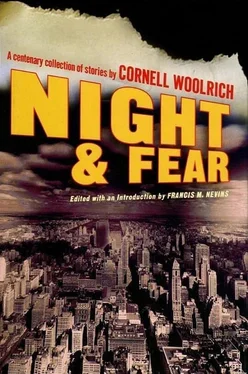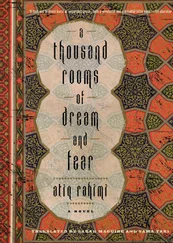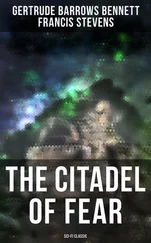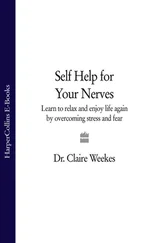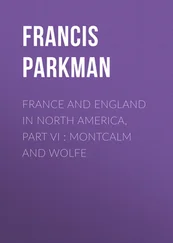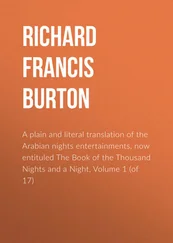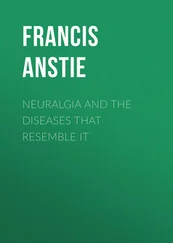Cornell Woolrich
Night and Fear
Introduction
Francis M. Nevins
Of all the authors whose forte was turning our spines to columns of ice, the supreme master of the art, the Hitchcock of the written word, was Cornell Woolrich. His centenary will be celebrated around the time this collection is published. Whatever honors he receives on that occasion will have been richly deserved, but if he were alive and well he wouldn’t have enjoyed a moment of the event and probably wouldn’t have shown up for it.
His full name was Cornell George Hopley-Woolrich. His mother, born Claire Attalie Tarler, was the daughter of George Tarler, a Russian Jewish emigre who had made his fortune in the import trade with Mexico and Central America. His father, Genaro Hopley-Woolrich, was of Canadian and Mexican descent, an adventurous macho who was both attractive and susceptible to women. Genaro’s half-nephew Carlos Burlingham, who as a teen-ager in the early 1940s lived with him for a year, describes him as “a very good-looking man with deep blue eyes... But you would never see him to smile. He always had a very narrow smile.” Around 1901 or 1902, while in the U.S. and working on the construction of New York City’s infant subway system, Genaro met Claire Tarler and soon married her. Their only child was born on December 4, 1903. In 1907 they left New York with three-year-old Cornell to resettle in Mexico but the marriage did not long survive the move. Claire returned to the Tarler household on West 113th Street near Morningside Park and the child staved with Genaro below the border. His schooling was punctuated by holidays whenever another revolutionary leader captured the town where they lived, and as a hobby he collected the spent rifle cartridges that littered the streets beneath his windows.
When he was eight Grandfather Tarler took him to Mexico City’s Palace of Fine Arts to see a traveling French company perform Puccini’s then new opera Madama Butterfly, an experience that gave the boy a sudden sharp insight into color and drama and his first sense of tragedy. Three years later, on a night when he looked up at the low-hanging stars from the valley of Anahuac, he understood that someday like Cio-Cio-San he too would have to die. From that moment he was haunted by a sense of doom. “I had that trapped feeling,” he wrote, “like some sort of a poor insect that you’ve put inside a downturned glass, and it tries to climb up the sides, and it can’t, and it can’t, and it can’t.”
During his adolescence he returned to New York City and lived with his grandfather and aunt and mother in George Tarler’s house on 113th Street. In 1921 he enrolled in Columbia College, a short walk from home, choosing journalism as his major but dreaming of a more romantic occupation, like being an author or a professional dancer. In his junior year, while immobilized with either an infected foot or a bad case of jaundice (his own accounts of the incident are at odds), he began the first draft of a novel. When it sold a few months later, he quit Columbia to pursue the dream of bright lights.
The main influence on Woolrich’s early work was F. Scott Fitzgerald, the literary idol of the twenties, and his first novel, Cover Charge (1926), chronicles the lives and loves of the Jazz Age’s gilded youth, child-people flitting from thrill to thrill, conversing in a mannered slang which reads today like a foreign language. But several motifs from his earlier and later life and his later suspense fiction can be detected in this rather amateurish debut. The fascination with dance halls and movie palaces. The use of popular song lyrics to convey mood. Touches of vibrantly colorful description. A long interlude in Mexico City complete with performance of Madama Butterfly. Romance between Alan Walker, the ballroom-dancer protagonist, and two women each of whom is old enough to be his mother. An extravaganza of coincidence to keep the story moving. And a despairing climax with Alan alone in a cheap hotel room, his legs all but useless after an auto smashup, abandoned by the women he at various times loved, contemplating suicide. “I hate this world. Everything comes into it so clean and goes out so dirty.”
Woolrich’s second novel was Children of the Ritz (1927), a frothy concoction about a spoiled heiress who impulsively marries her chauffeur. The book won first prize of $10,000 in a contest cosponsored by College Humor magazine, which serialized it, and First National Pictures, which filmed the story in 1929. Woolrich was invited to Hollywood to help with the adaptation and stayed on as a staff writer, although he never received screen credit for whatever contributions he made. One of First National’s dialogue and title writers at this time was named William Irish.
With novels, movie chores and an occasional article or story for magazines like College Humor, College Life, McClure’s and Smart Set, Woolrich must have been a busy young man indeed. By the time of his gritty and cynical third book, Times Square (1929), he had begun to develop the headlong storytelling drive and the concern with the torments and the maniacal power of love which were to mark his later suspense fiction. The first half of his semi-autobiographical novel A Young Man’s Heart (1930) is set in Mexico around 1910 and the viewpoint is that of a young boy during and after the collapse of his parents’ marriage.
In December 1930, while still working in Hollywood, Woolrich suddenly married 20-year-old Gloria Blackton, a daughter of pioneer movie producer J. Stuart Blackton, who had founded Vitagraph Studios in 1897. The marriage was never consummated. A graphic diary that Gloria eventually found and read but later returned to Woolrich (who destroyed it) indicates that he had been homosexual for some time prior to the marriage, which he had entered as a sort of sick joke, or perhaps for cover. In the middle of the night he would put on a sailor outfit that he kept in a locked suitcase and prowl the waterfront for partners. The marriage soon ended and Woolrich fled to New York and mother. “I was born to be solitary,” he said in his autobiography, “and I liked it that way.” But the pages of his novels and stories are haunted by the shadow of his desperate need for a relationship with a woman who never was and never could have been.
After the breakup of his marriage, Woolrich and his mother traveled extensively in Europe. His sixth novel, Manhattan Love Song (1932), is the best of his youthful books and the only one that, if published a few decades later, would have been called a crime novel. It begins with a quintessential Woolrich moment.
FIRST SHE WAS JUST A FIGURE MOVING TOWARD ME IN THE DISTANCE, AMONG A GREAT MANY OTHERS DOING THE SAME THING. A SECOND LATER SHE WAS A GIRL. THEN SHE BECAME A PRETTY GIRL, EXQUISITELY DRESSED. NEXT A RESPONSIVE GIRL, WHOSE EYES SAID “ARE YOU LONELY?”, WHOSE SHADOW OF A SMILE SAID, “THEN SPEAK.” AND BY THAT TIME WE HAD REACHED AND WERE ALMOST PASSING ONE ANOTHER. OUR GLANCES SEEMED TO STRIKE A SPARK BETWEEN US IN MID-AIR.
Wade, the narrator, soon becomes a helpless slave to his passion for the enigmatic Bernice. Under her spell he abandons his job, assaults and robs a homosexual actor for money to spend on her, abuses his wife Maxine who still loves him desperately. Bernice in some mysterious way is controlled by unseen powers in the city but responds so passionately to Wade’s abject passion for her that she’s ready to sacrifice everything and risk the powers’ vengeance to start life over again with him. But as usual in Woolrich, love opens the door to horror and those who manage to survive have nothing left but to wait for the merciful release of death.
Читать дальше
